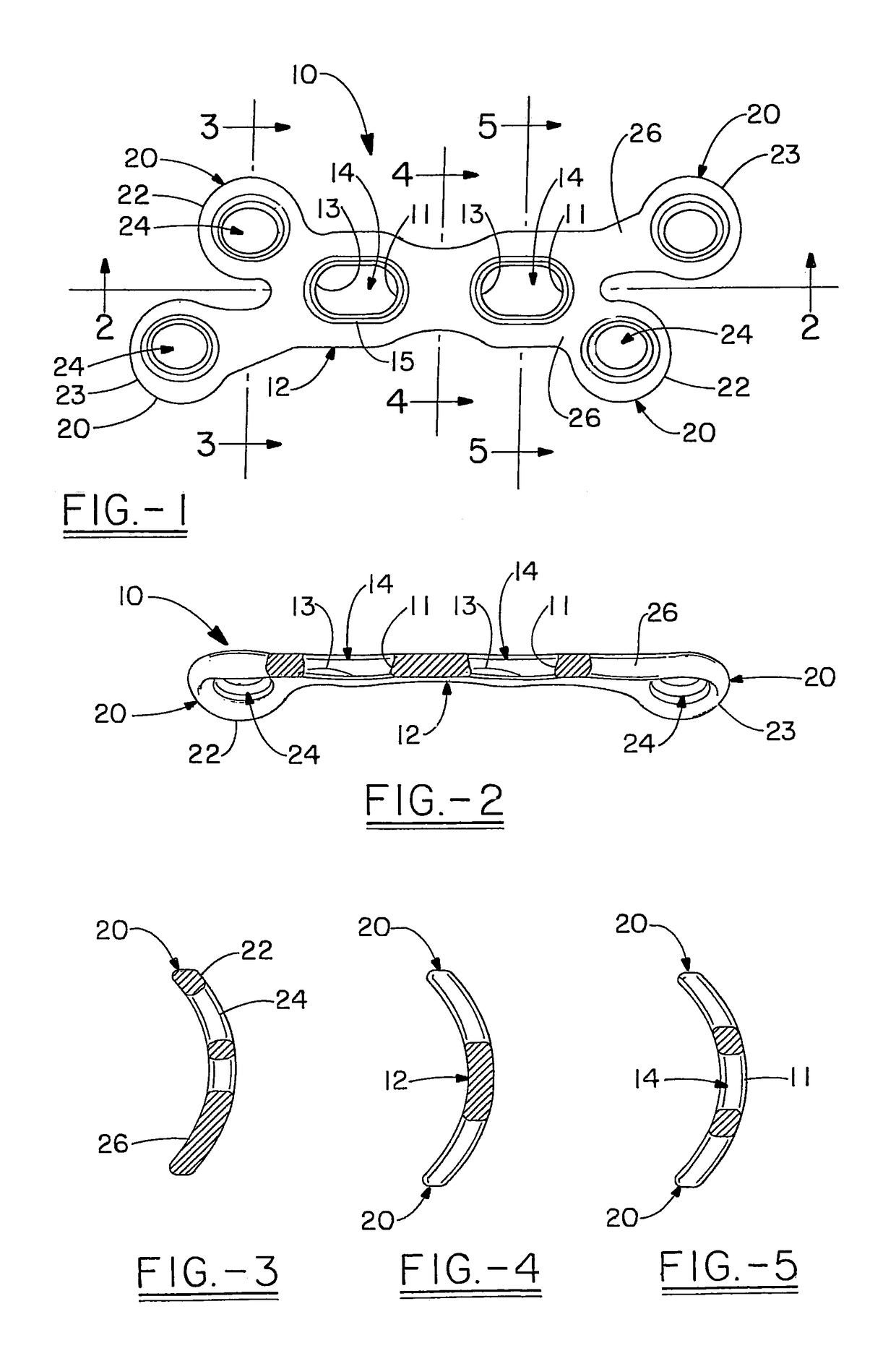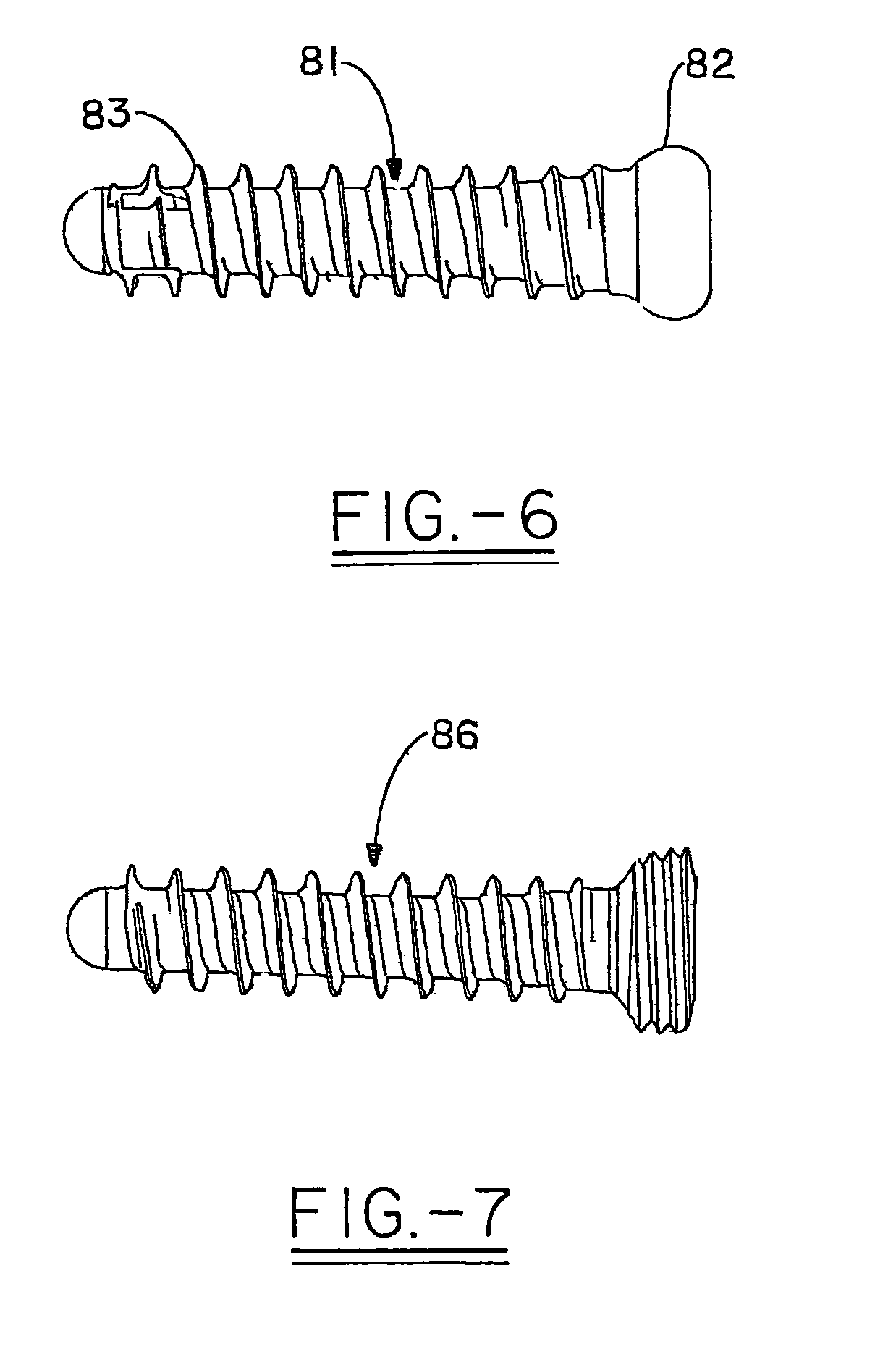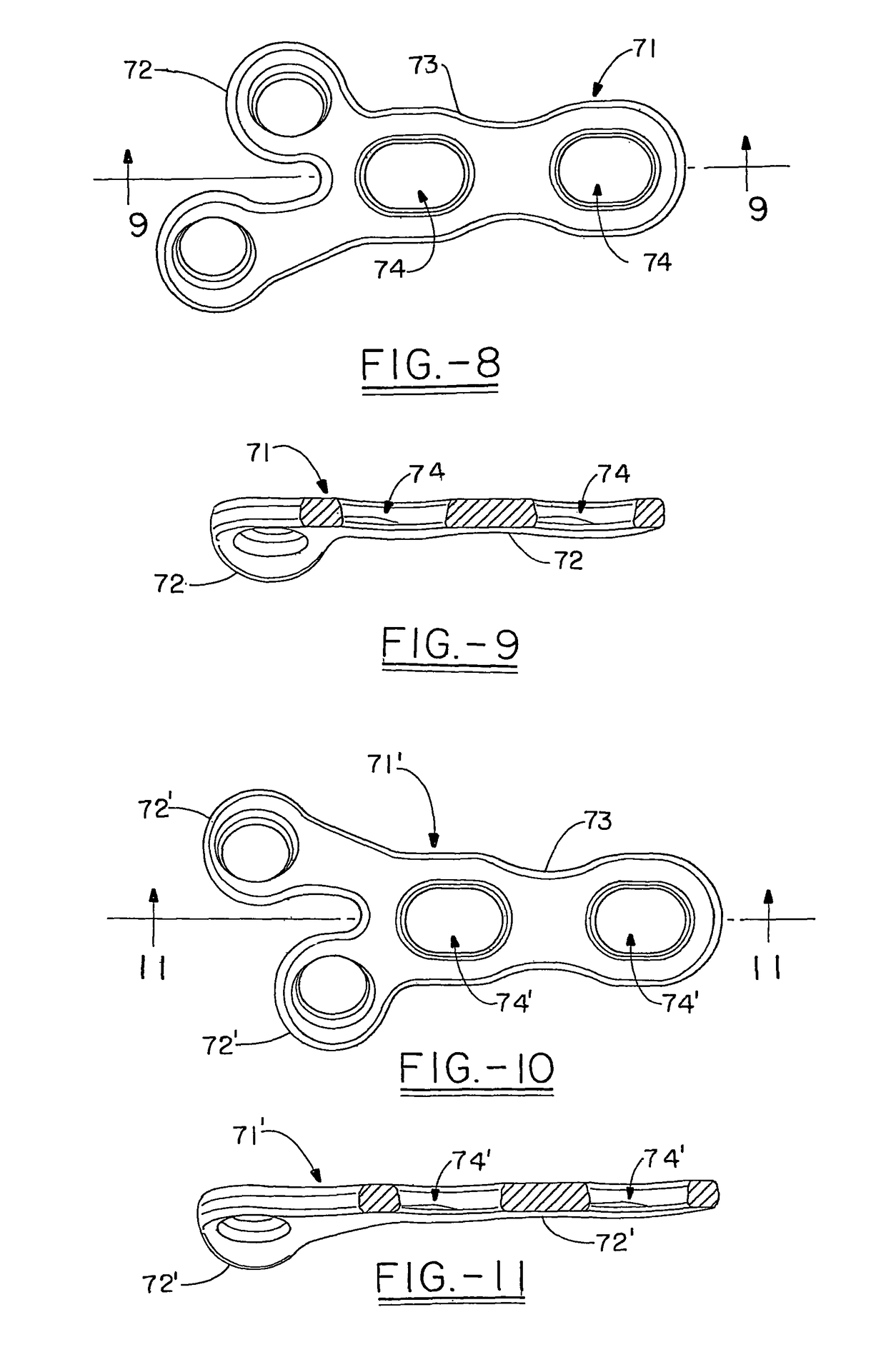Orthopedic plate for use in fibula repair
a technology for orthopedic plates and fibulas, applied in the field of orthopedic plates, can solve the problems of weakened plates, distorted screws, and more variability, and achieve the effects of reducing the risk of fracture, and improving the quality of li
- Summary
- Abstract
- Description
- Claims
- Application Information
AI Technical Summary
Benefits of technology
Problems solved by technology
Method used
Image
Examples
Embodiment Construction
[0033]The plate 10 of the present invention is shown having a bilaterally asymmetric shape with either one or two pairs of legs extending from a central trunk portion 12 defining the longitudinal axis of the plate. As shown the trunk portion 12 includes two screw holes or slots 14 along the longitudinal axis. However, as can be seen from FIGS. 12 through 18 the plate can be presented in a version which has a plurality of screw holes, for example up to 8 or more. The number of screw holes in the trunk portion 12 will depend on the length of the plate, and may range from 0 to 8, and more preferably from 2 to 4. In one embodiment these holes are compression holes or translation slots. The compression holes 14 are preferably slotted or elongated and optionally may have a larger radius area 11 on each of the screw holes facing in the same direction, and a smaller radius area 13 in order to induce a compression toward the smaller radius end. The holes may also or alternatively have a shal...
PUM
 Login to View More
Login to View More Abstract
Description
Claims
Application Information
 Login to View More
Login to View More - R&D
- Intellectual Property
- Life Sciences
- Materials
- Tech Scout
- Unparalleled Data Quality
- Higher Quality Content
- 60% Fewer Hallucinations
Browse by: Latest US Patents, China's latest patents, Technical Efficacy Thesaurus, Application Domain, Technology Topic, Popular Technical Reports.
© 2025 PatSnap. All rights reserved.Legal|Privacy policy|Modern Slavery Act Transparency Statement|Sitemap|About US| Contact US: help@patsnap.com



